I’m an English Muffin fanatic. They’re complete breakfast heaven to me, especially when turned into a breakfast egg sandwich. I vaguely remember baking my first batch eight or nine years ago and as far as I remember, they turned out pretty good. So, now that I have time and space to do some baking again, Homemade English Muffins were on the top of my list.
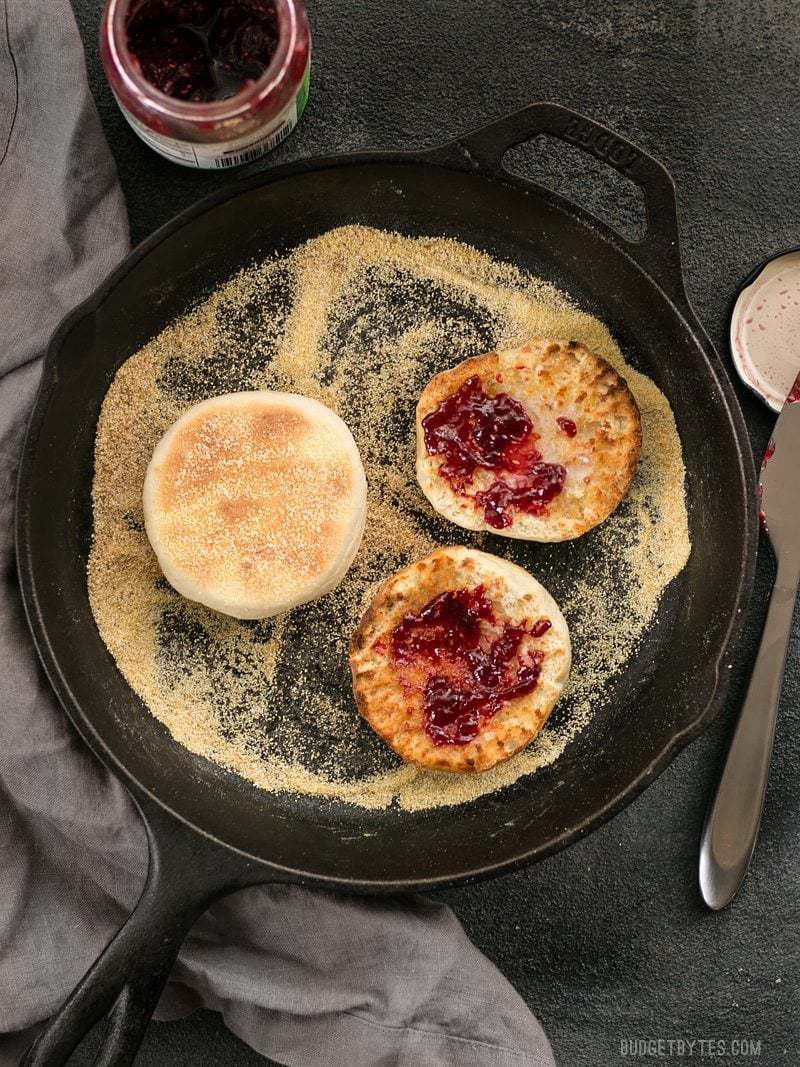
This post contains some affiliate links, which means that we make a small commission off items you purchase at no additional cost to you.
Recipe Inspiration and Adjustments
After looking at a good 20+ recipes, I decided to work off of this one on allrecipes.com. After reading a bunch of reviews, I made a few changes.
It seems that there are two keys to getting an English Muffin with the classic “nooks and crannies” they are famous for. First, make sure the dough stays soft and loose. This means not adding too much flour during the kneading process and kneading for a shorter length of time (about 5 minutes). Second, letting the dough rise only once (as opposed to the usual two for most breads) allows giant gas bubbles, rather than small uniform bubbles, to form. The muffins turned out nice and light with a decent amount of nooks and crannies. There weren’t enormous pockets like the store bought muffins but I’m willing to trade some of that for a muffin that only costs seven cents (and is pretty fun to make).
Serving Suggestions
English muffins are great for more than just eating toasted with butter and jam…although they would taste amazing with homemade Pumpkin Butter! I also love to make mini-pizzas with them, or my make-ahead breakfast sandwiches. I also love to smear them with a little hummus and add a fried egg for a different sort of savory breakfast sandwich.
How to Store English Muffins
After baking your English Muffins, make sure to let them cool completely. Once they are cooled, you can either freeze or refrigerate them. When refrigerated they’ll keep for about a week. If frozen, they’ll keep for months. When freezing, make sure to use a heavy duty freezer bag to keep air out and prevent the muffins from drying out. They should thaw quickly at room temperature, or if pre-sliced, can go straight from the freezer to the toaster.
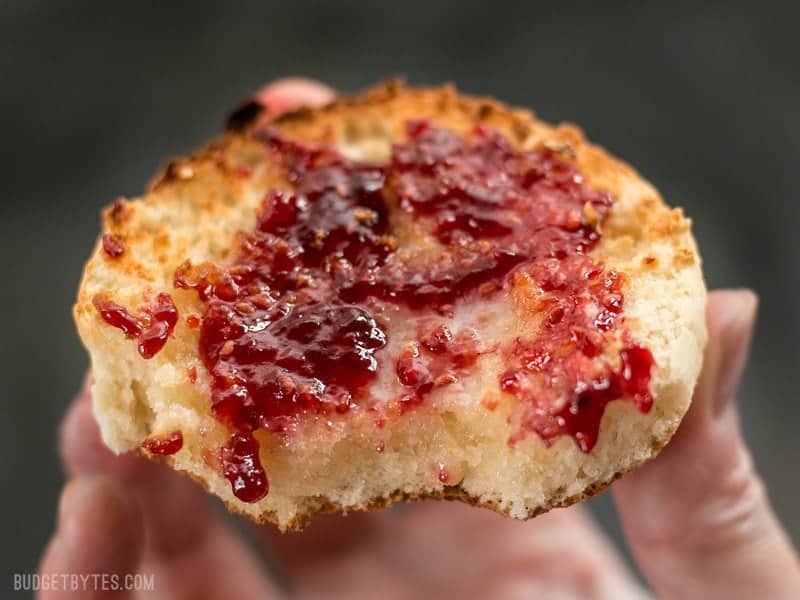
Love making homemade bread? Check out our Bread Recipes category!
Homemade English Muffins Recipe
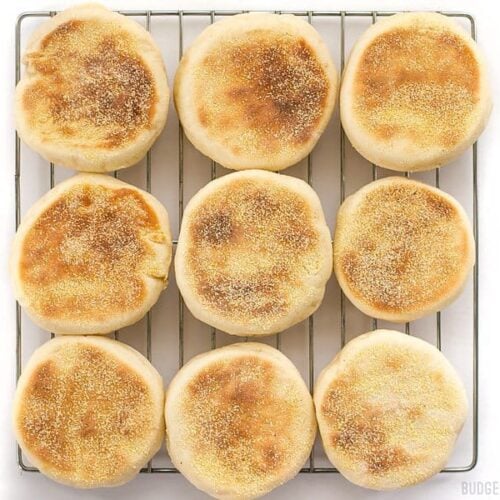
Ingredients
- 1 tsp active dry yeast ($0.10)
- 1 Tbsp sugar, divided ($0.05)
- 1/2 cup warm water ($0.00)
- 1/2 cup milk ($0.15)
- 2 Tbsp butter ($0.27)
- 3 cups all-purpose flour, divided ($0.36)
- 3/4 tsp salt ($0.05)
- 1/4 cup cornmeal ($0.06)
Instructions
- Dissolve the yeast and half of the sugar into 1/2 cup warm water in a large bowl, and let it sit for about 5 minutes, or until it has developed a thick foam on top.
- While waiting for the yeast, combine the milk, butter, and the rest of the sugar in a measuring cup or microwave safe bowl. Microwave on high for 30 seconds, then stir until the butter is dissolved. Add an additional 10 seconds if needed. You want the milk warm enough to melt the butter, but not scalding.
- Once the yeast is foamy, pour the milk and butter mixture into the bowl, along with 1 cup of the flour, and the salt. Stir until the mixture is mostly smooth. Add the second cup of flour, about 1/3 cup at a time, stirring to combine each time. Finally, begin to add the third cup of flour, 1/3 cup at a time, until you can no longer stir it with a spoon. At that point, turn the dough out onto a lightly floured surface and knead for about 5 minutes, dusting with small amounts of flour as you go. Once finished kneading, you should have used 2.5-3 cups flour total.
- Let the dough rest for 15 minutes, then roll it out to about 1/2-inch thickness. Use a cookie cutter or sharp edged drinking glass to cut several discs out of the rolled dough. Cut them as close to each other as possible to leave few scraps. When you can cut no more circles, ball the scrap dough up, flatten it once again, and cut a few more. Place the cut muffins on a baking sheet coated with a liberal layer of cornmeal.
- Let the muffins rise in a warm moist area for about 1.5 hours, or until they are slightly more than double the size. (I placed a casserole dish full of steaming water on the bottom rack of my oven and placed the baking sheet on the top rack to keep the muffins moist as they rose.)
- When the muffins are large and fluffy, it’s time to cook them in a skillet. Heat a cast-iron or non-stick skillet over medium low heat. Once the skillet is preheated, carefully use a spatula to lift 3-4 muffins from the baking sheet and slide them into the skillet, along with some cornmeal. Let the muffins cook 3-4 minutes, or until lightly golden brown on the bottom. Carefully flip the muffins and cook for 3-4 minutes on the second side. The muffins will puff further as they cook in the skillet. Once the muffins are golden on both sides and sound hollow when tapped, transfer them to a wire rack to cool.
- Once completely cool, split the muffins with a fork and toast in a toaster or the oven. Or, transfer the cooled muffins to an air-tight container and keep in the refrigerator for up to one week, or the freezer for up to three months.
See how we calculate recipe costs here.
Equipment
- Cast Iron Skillet
- Wire Cooling Racks
- Mixing Bowls
Nutrition
Scroll down for the step by step photos!
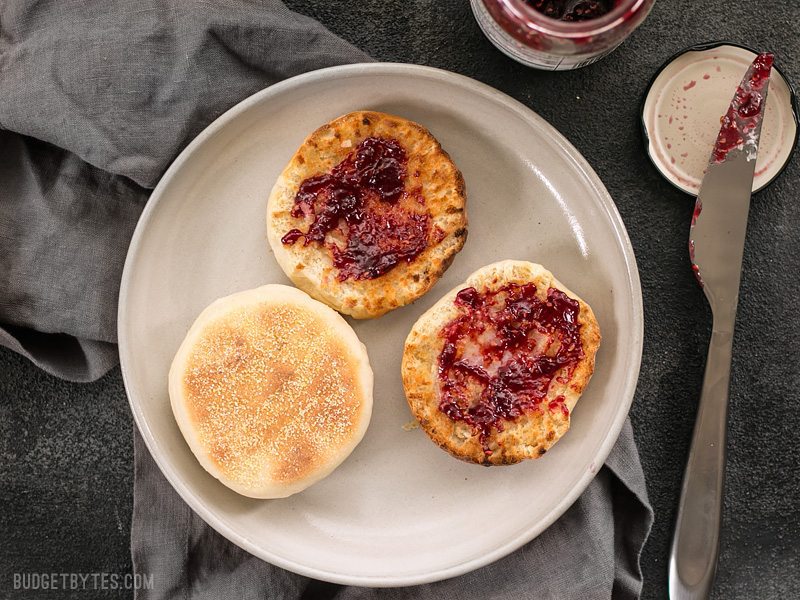
How to Make Homemade English Muffins – Step By Step Photos
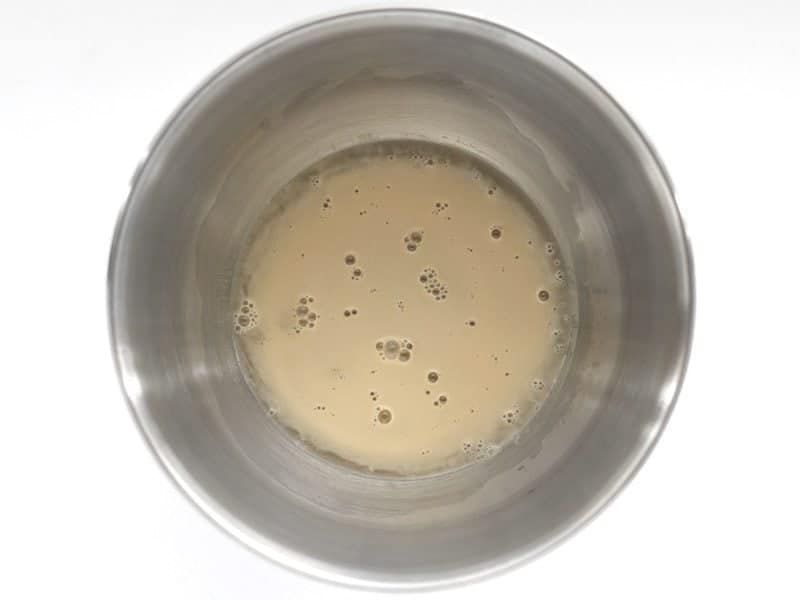
Begin by combining 1/2 cup warm water with 1 tsp yeast and 1/2 Tbsp sugar. Stir to dissolve, then let them sit until a thick layer of foam develops on top.
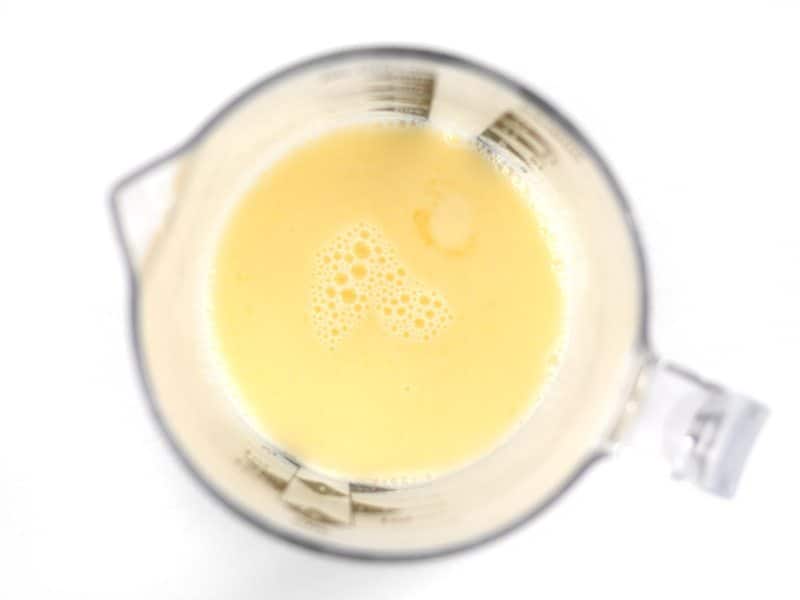
While waiting for the yeast to foam, combine 1/2 cup milk, 2 Tbsp butter, and the second 1/2 Tbsp sugar in a measuring cup or microwave safe bowl. Microwave for 30 seconds, then stir until the butter melts. You can do an additional 10 seconds in the microwave, if needed, but try to get the milk just warm enough to melt the butter, not scalding.
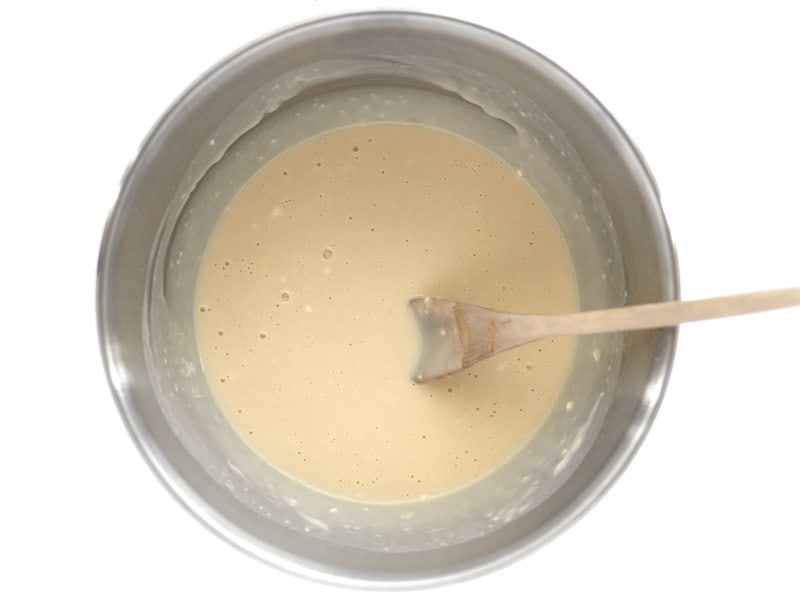
Once the yeast is foamy, pour in the milk mixture, 1 cup flour, and 3/4 tsp salt. Stir until the mixture is mostly smooth.
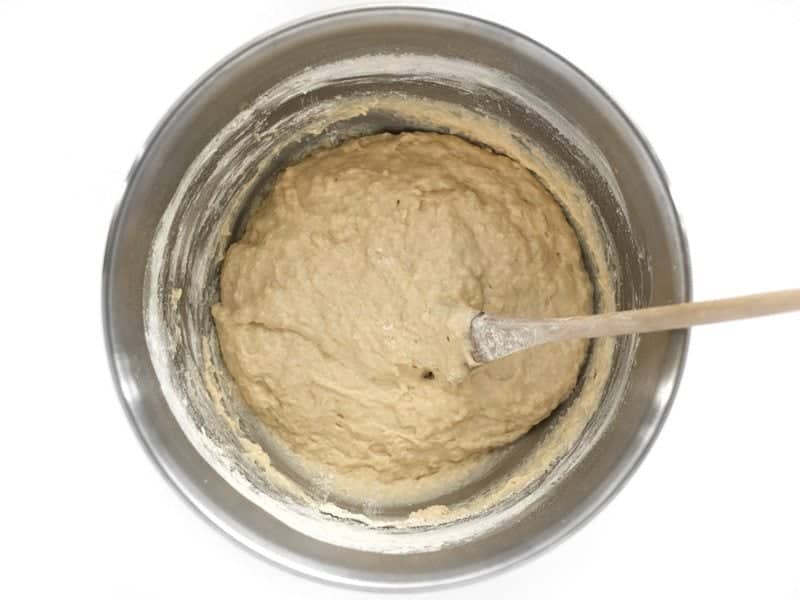
Stir in a second cup of flour, about 1/3 cup at a time, stirring until incorporated before adding more.
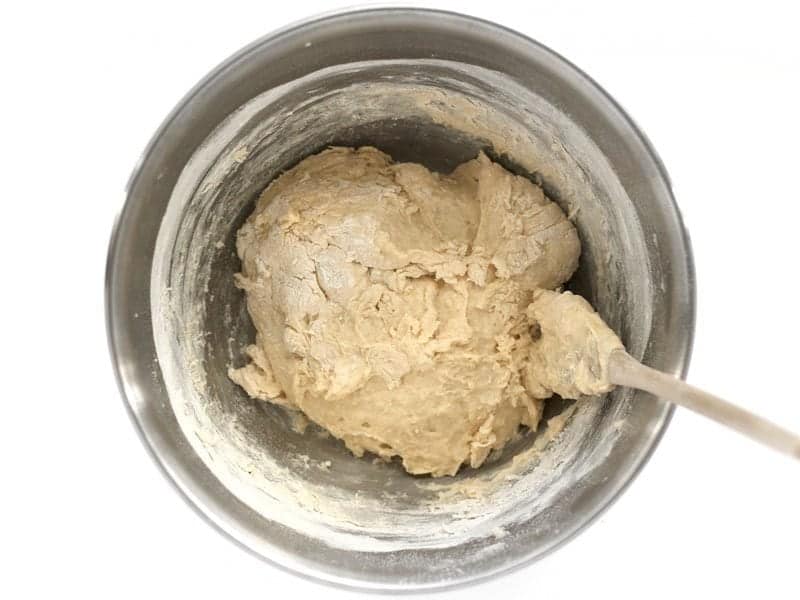
Finally, begin to add a third cup of flour, again a small amount at a time, until you can no longer stir it with a spoon. At that point, turn the dough out onto a floured surface and knead for about 5 minutes, adding small amounts of flour as you go. Only add enough flour to keep the dough from sticking, as adding too much can cause the dough to get stiff.
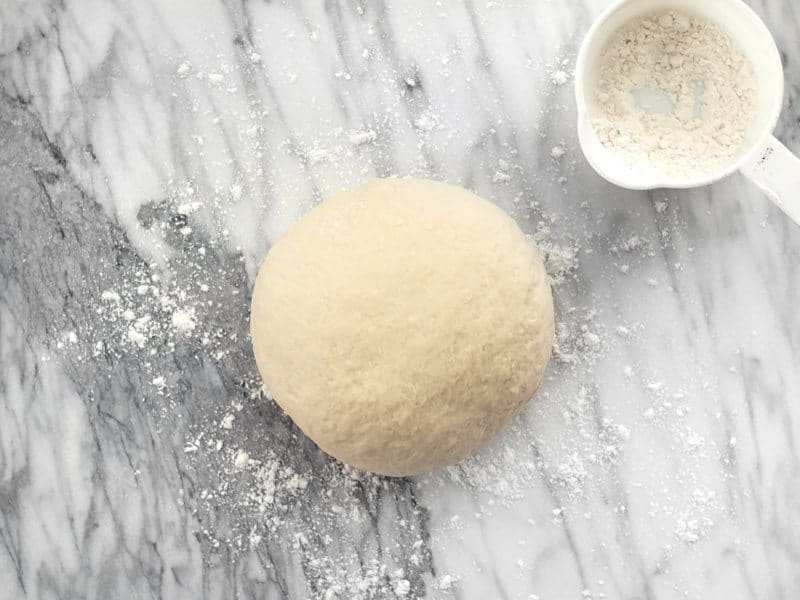
After kneading, you should have used somewhere between 2.5 to 3 cups flour. Let the dough rest for 15 minutes.
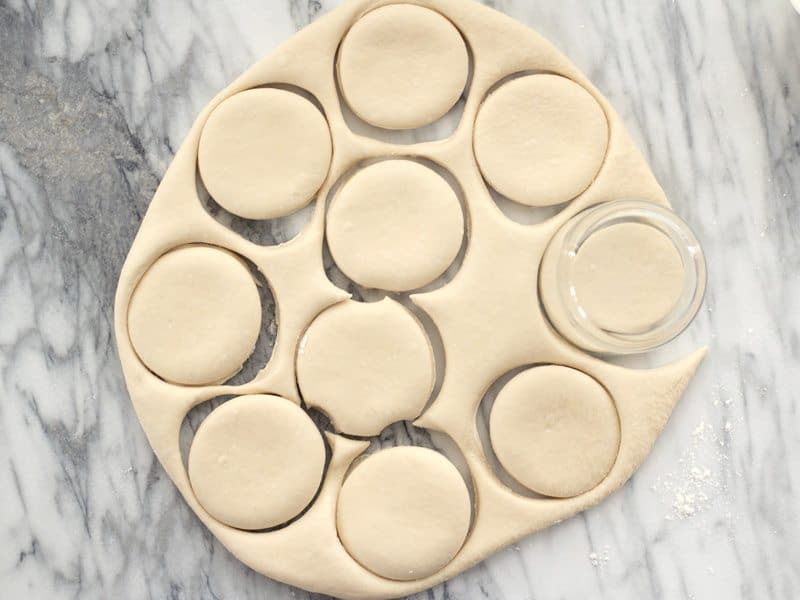
Roll the dough out to about 1/2-inch thickness, then use a cookie cutter or sharp-edged glass to cut as many circles into the dough as possible. Cut the circles close to each other to leave as little scrap dough as possible. Gather up the scraps, form them into a ball, press the dough out once more, then cut a few more circles.
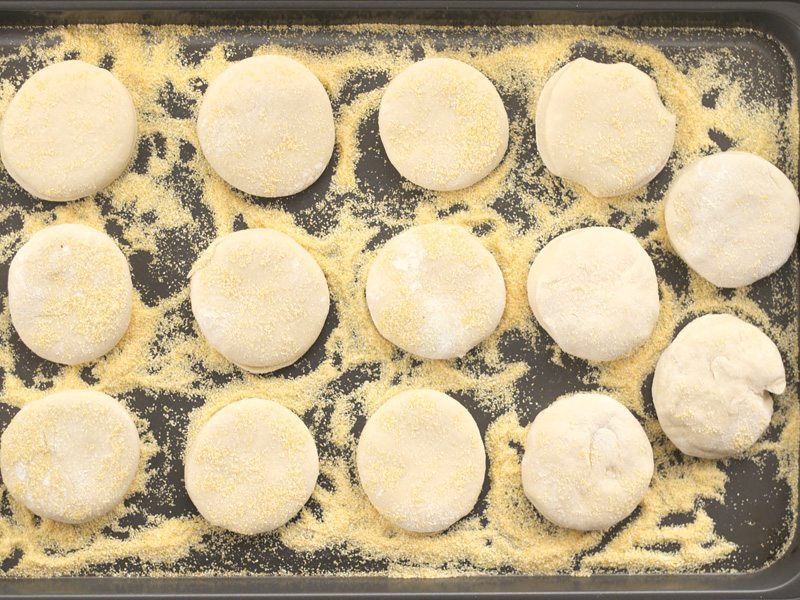
Cover a baking sheet liberally with cornmeal (this is 1/4 cup of cornmeal spread out on a large baking sheet). Arrange the muffins on the cornmeal, pressing one side into the corn meal, then flipping them over and pressing again, making sure there is plenty of cornmeal under each one to prevent it from sticking as they rise.
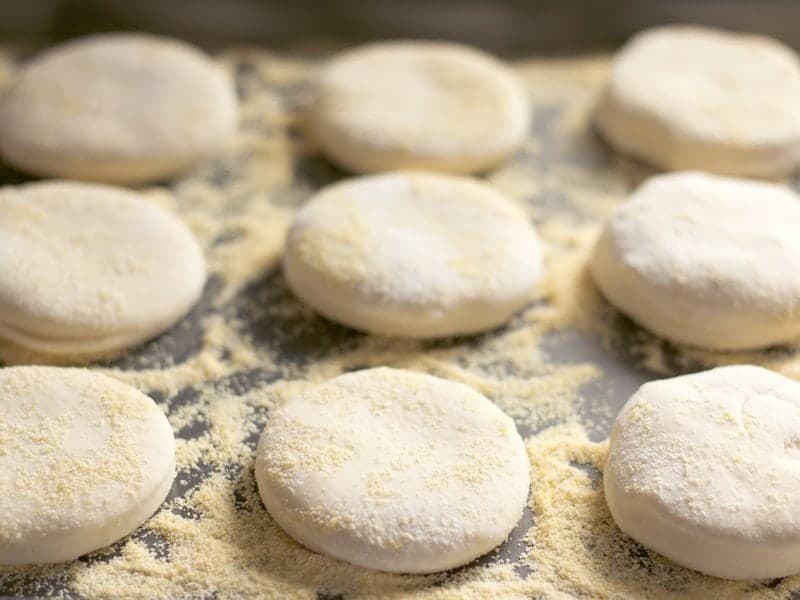
For reference, here is a side view so you can see how thin they are. Let the muffins rise in a warm, moist area for about 1.5 hours or until they’re slightly larger than double their size. I put a casserole dish with steaming water on the bottom shelf of my oven and placed the baking sheet with the muffins on the top rack (oven turned off) to create a nice warm environment for them to rise.
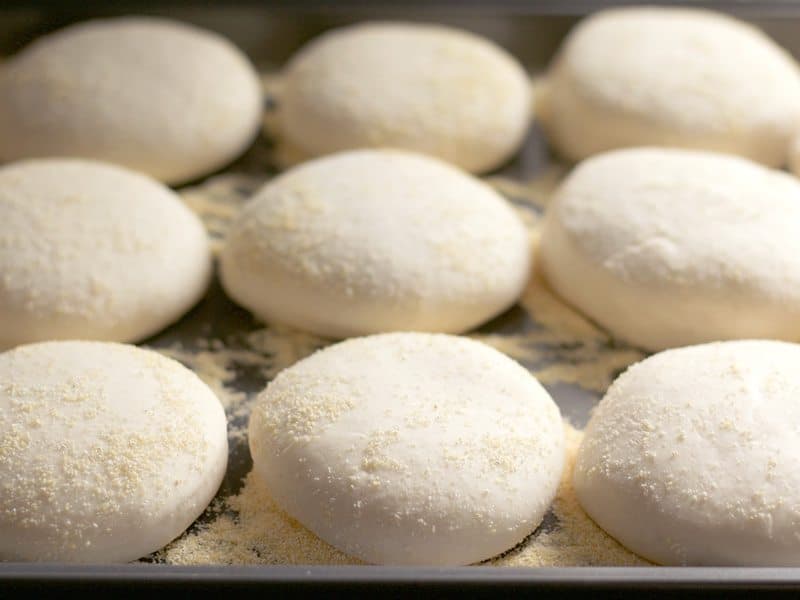
The Muffins should be very large, fluffy, and delicate after rising. Make sure they’re not touching each other because pulling them apart could cause them to deflate.
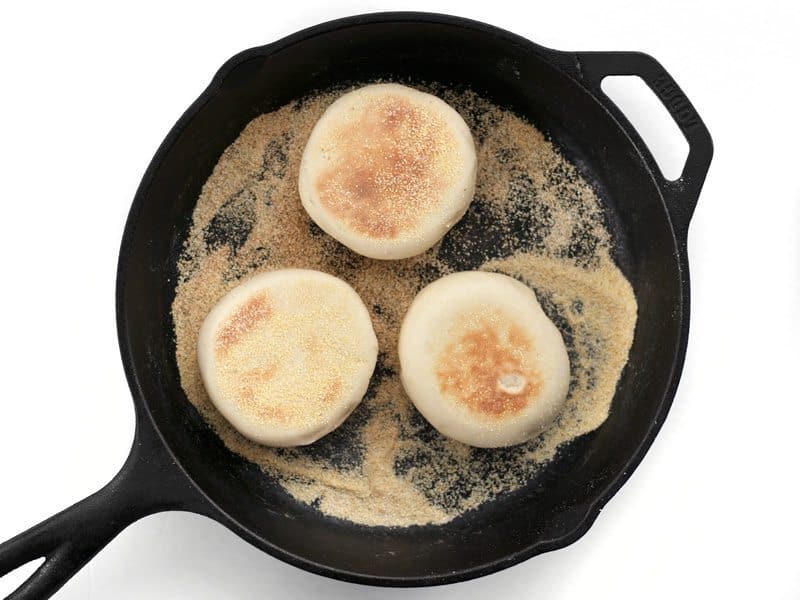
Once risen, it’s time to cook them in a skillet. Heat a cast iron or non-stick skillet over medium-low. Once preheated, use a spatula to carefully lift a few of the muffins off the baking sheet and onto the skillet, along with some of the cornmeal. Cook on each side until golden brown (3-4 minutes per side). The cornmeal will keep the muffins from sticking (the cornmeal in the skillet in the photo above is after 3-4 batches, each batch adding more to the skillet). The muffins will puff even further in the hot skillet.
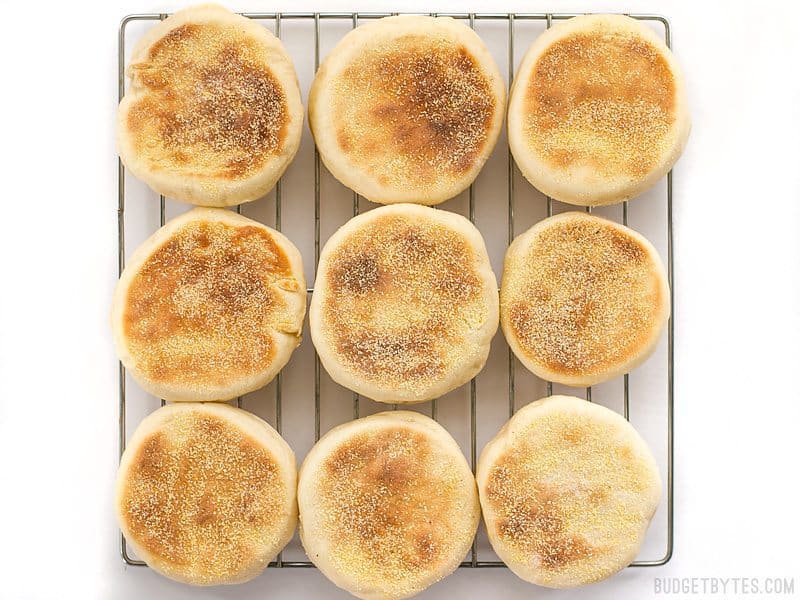
Transfer the cooked English Muffins to a wire rack to cool.
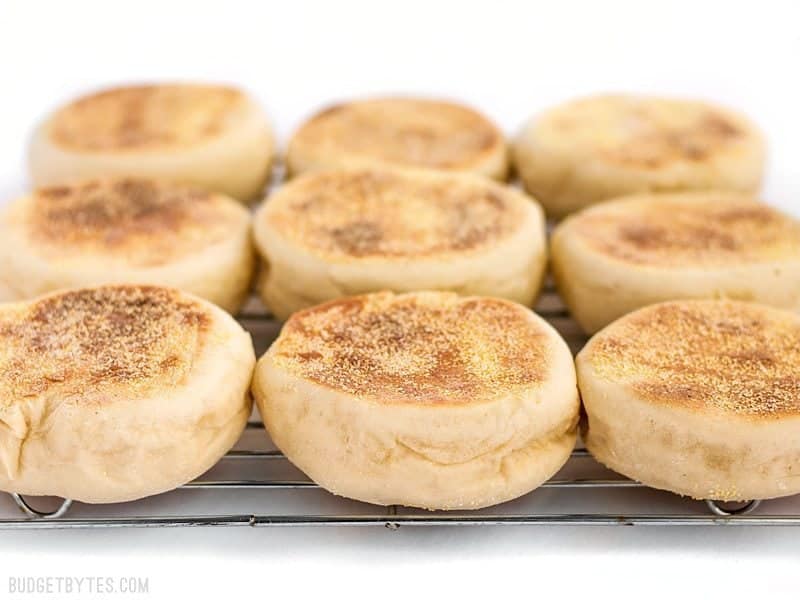
Once cool, either split with a fork and toast, or transfer to an air-tight container (like a gallon-sized freezer bag) to store in the refrigerator or freezer.
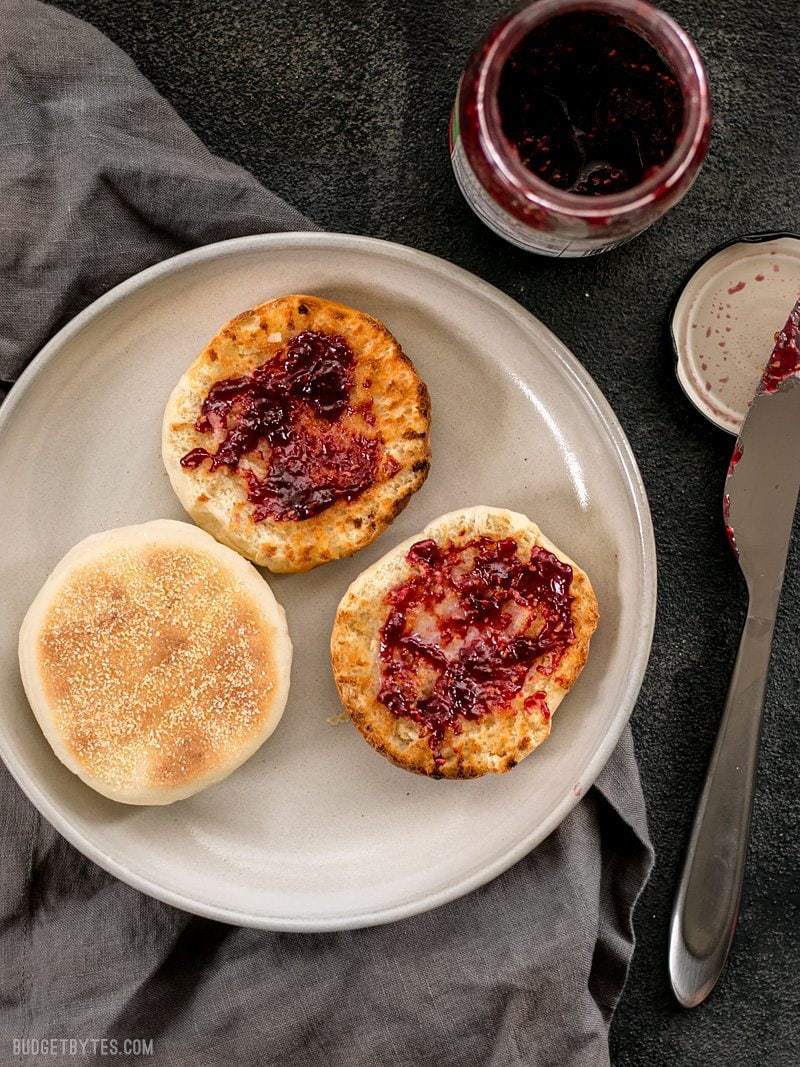
These Homemade English muffins are absolutely to-die-for with butter and jam! Light and fluffy, with very crispy edges and crunchy cornmeal bottoms!


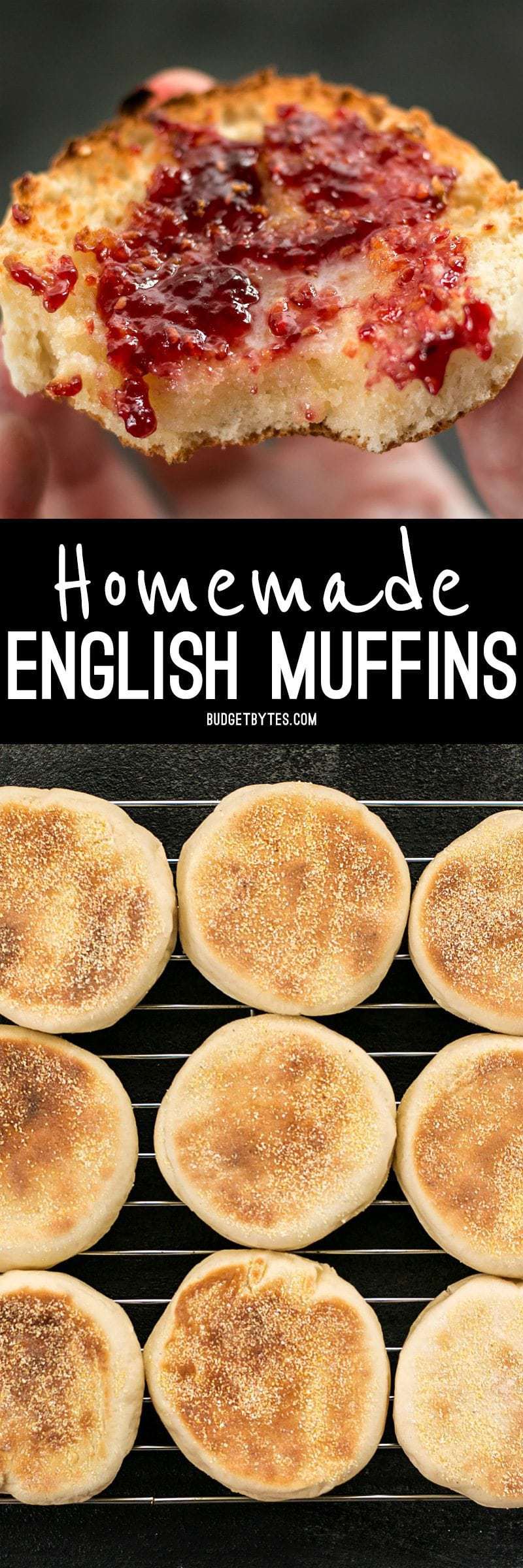
Would it be okay to use fresh yeast here? And if so, how would I substitute it?
Thanks!
Unfortunately, I’m not experienced with using fresh yeast so I can’t advise.
I’ve made two batches of these already and they taste great! My only concern is I’m not getting those nooks and crannies in these. The bubbles are still pretty small. Any reason why this could be?
I’ve made these a couple times. They are great. I was wondering if you’ve ever tried to make cinnamon raisin english muffins and get ideas on how much of each to use.
I haven’t tried that, unfortunately!
Question! I really like this recipe, but the last couple of times I’ve made it, the muffins don’t bake all the way through and stay doughy. I’m leaving them on the skillet till they’re nice and golden, and I don’t open them too early, but they’re just super sticky inside. Any ideas on baking them all the way through?
Hmm, it’s hard to say without being there to watch your process, but my guess would be that maybe the heat in your skillet is just a bit too high so the outside is finished cooking before the inside has a chance to cook through?
When cooking in the cast iron pan, do you heat it with oil or just dry heat the pan?
Dry heat. :) The cornmeal will help keep them from sticking.
When cooking muffins cover them with a lid,hope that helps!
So good! Super easy! They were simple to put together and tasty!!! I’ve always been intimidated to make English muffins but these were simple. Will make again for sure!!
In your ingredient list, you call for 3 cups of flour. In Instructions, item #3 it references all 3 cups of flour to be added in intervals. Further down in item # 3 during the kneading instructions, it states: After kneading, you should have used somewhere between 2.5 to 3 cups flour. That is a little confusing. Is that in addition to the the before mentioned 3 cups?
Hi Robin. That is total. She’s stating start with one cup of flour. Then add 1/3 cup at a time until you can no longer stir it. Hope that helps?
Hi! I want to make the english muffins but I don’t have cornmeal or semolina for dusting. What can I use instead?
You could use rice or all purpose flour if that’s what you have on hand. But it may not get that signature crunch!
i have never made English muffins before. how do i divide 1 tablespoon of sugar?
i really did not want this to be too complicated. please let me know how many prep bowls of sugar do i need
to put however little amounts of sugar i need for this English muffin recipe .
please e-mail me to let me know at [email protected]
There are 3 teaspoons in a Tablespoon. So 1.5 teaspoons with the yeast in the first step then 1.5 next.
Is there any kind of substitute I could use for the cornmeal? I want to make these but my fiance is allergic to corn. Thanks!
Semolina would be a great swap.
I jist tried them oh yum. It was easier then i thought. Some were bigger then others but thats ok. I loved putting them in oven with steaming water. Thanks well worth it
Still in the process of cooking these as I type away but these are great! I just ate one with some jam and it was nice and fluffy and was quite moist. I originally screwed up and rolled my dough too thin and didn’t catch it until after I cut out a bunch of circles but with that mistake came a reward. I just lightly smushed two cut outs together and let them rise that way and cooked them up and they are super easy to pull apart!! They also have that characteristic ridge in the center that the store bought ones look to have. Excited to try these tomorrow as eggs Benedict
Do you think these could be made substituting buttermilk for the milk?
It’s tough to say without testing that one, since buttermilk is a lot more acidic than regular milk and that might throw off the chemistry of the dough.
My first time making English muffins and they turned out really good. I knocked off a star because I think the recipe should emphasize two things. One, using the appropriate sized cutter (biscuit or otherwise). I used what I thought was a pretty big jar and they turned out a little small. I like the commenter’s idea to use an old tuna can. Second, the name of the game with this recipe is not deflating these guys. They need plenty of space to rise and abundant cornmeal to avoid sticking. If you have to peel them off the tray or each other they will deflate. I also found that sliding them into the pan same-side-up as the rise made them stay puffier than flipping. Make sure the pan is truly hot -takes a while – for optimal fluffiness. Anyway, with these notes, this was a super fun project and I enjoyed the novelty of cooking bread on the stove. They’re way more moist than store-bought English muffins and much more worthy of toast or a sandwich. Yum!
Very good recipe! I was impatient with the initial sponge and ended up without the characteristic holes. A biscuit cutter (2 3/4” diameter) produces smaller than normal muffins with a yield of 14. In the future, I’d be more patient and use an old tuna can to cut larger rounds.
What do you mean you were impatient? I didn’t have very many holes either so trying to figure out what I did wrong.
I can’t wait to try this! Has anyone tried this with vegan butter and milk?
This was my first time making english muffins, and they turned out great! I made mine with Earth Balance butter and Earth’s Own Barista Oat Milk and it worked out :)
I used olive oil and plain water and they turned out amazing!
I love you guys.
Thank you so much!
I’m at a high altitude and followed your recipe as close as possible. They turned out wonderful! Thank you so much.